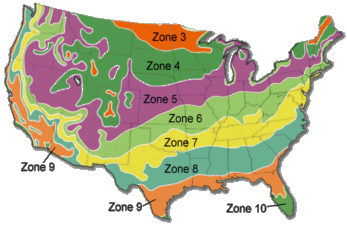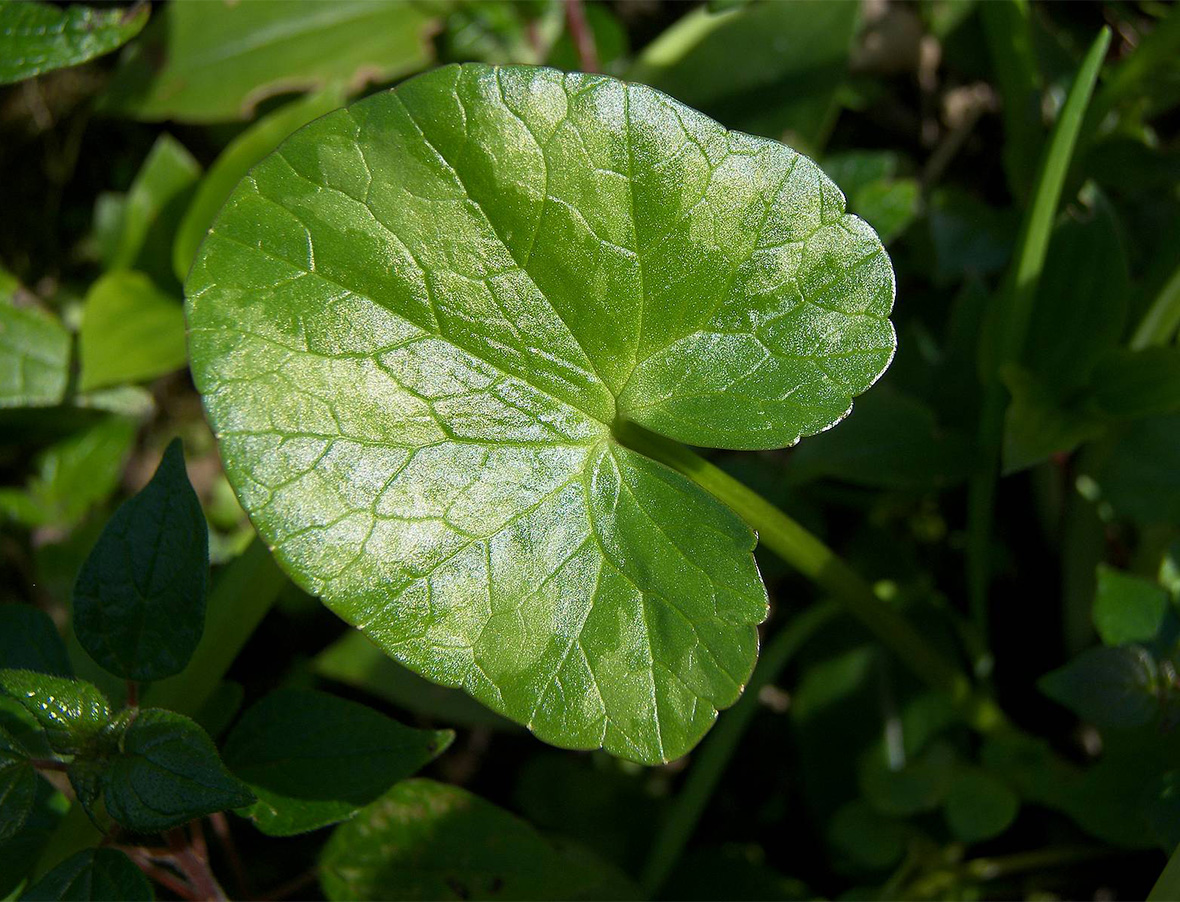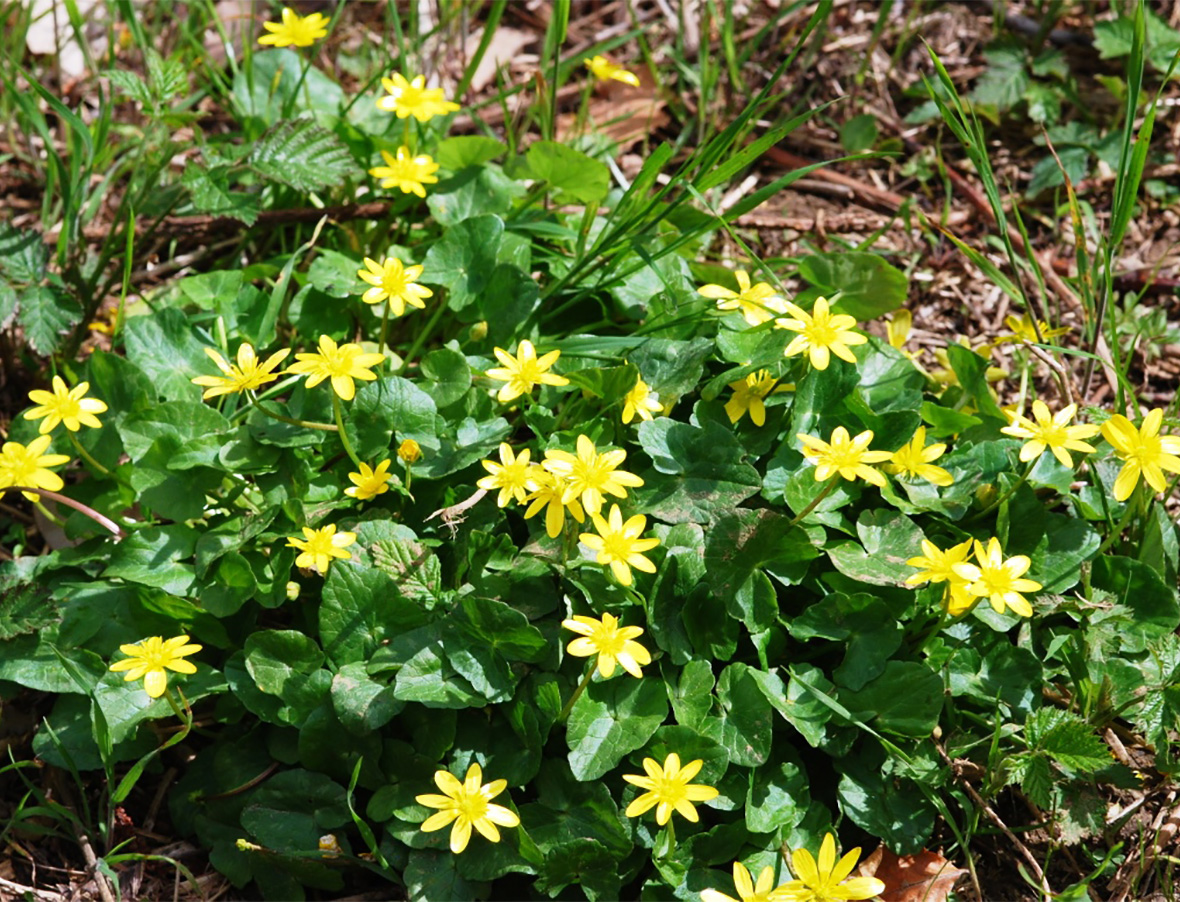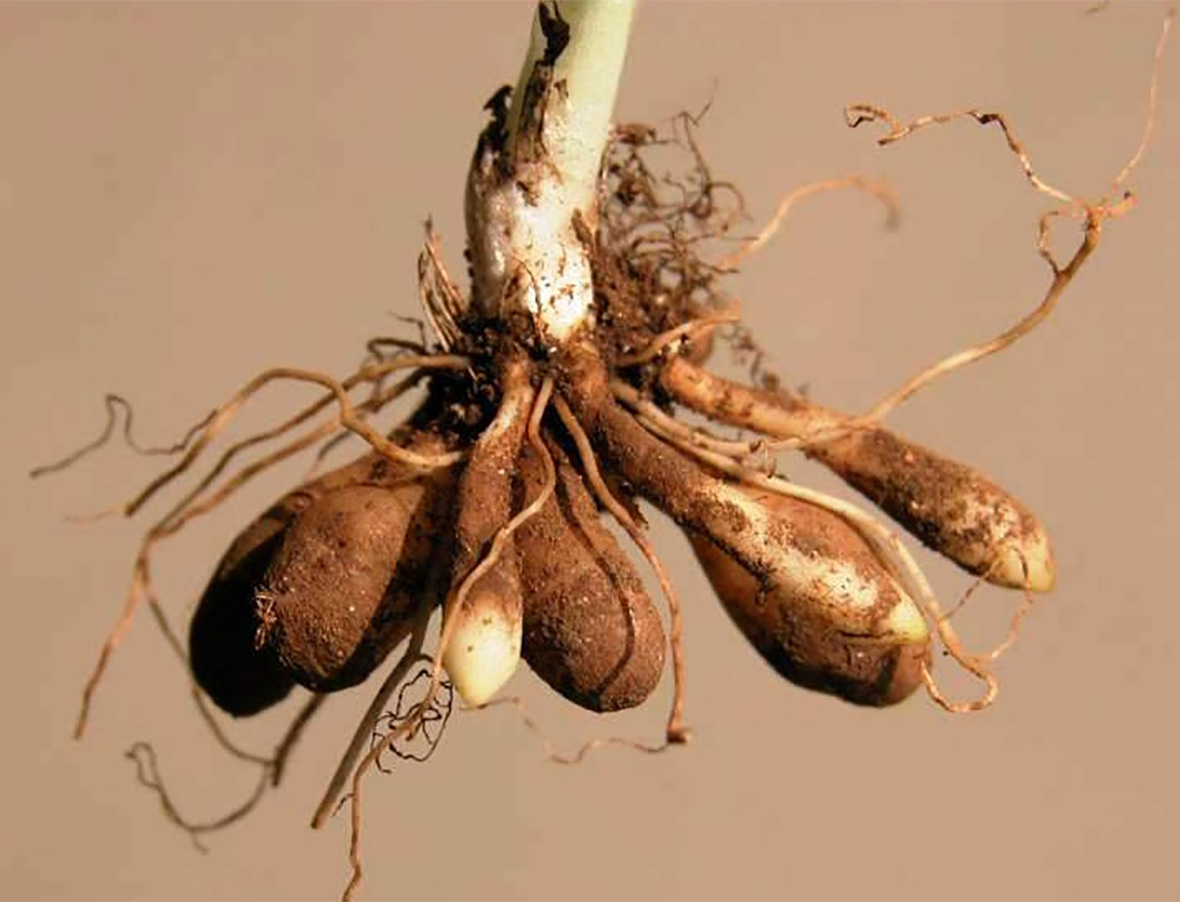Lesser Calandine
Scientific Name: Ficaria verna
Also Known As: Fig buttercup, pilewort, figroot buttercup, figwort, bulbous buttercup, small crowfoot
Weed Family: Ranunculaceae
Description
Highly variable, hairless perennial with club-shaped, tuberous roots. Plants grow up to around 12 inches tall in a mounded rosette with basal and stem leaves. Solitary yellow flowers bloom at stem tips and form clusters of achenes. Flowers are typically solitary on stem tips. They are around 1 inch wide. Flowers have 3 (sometimes 4) pale green sepals and typically 7-13 yellow petals. Flower color may vary depending on cultivars. Plants have basal and stem leaves. Basal and lower stem leaves have longer petioles. Leaves are medium to dark green, often paler on their undersides. They are oblong, heart or triangular in shape with edges that can be smooth or have teeth rounded. Stems grow up to 16 inches, growing up and outward. Pale aerial bulbils can form in leaf axils, and when they fall to the ground can sprout and grow into a new plant. The fruit is a globular shaped cluster of achenes. Each achene contains a single seed.Weed Photos: Courtesy of Dr. Lambert McCarty. Clemson University. Clemson, SC.
Herbicide Use
The use of systemic herbicide may provide control for large infestations as it kills the entire plant, including the roots, and minimizes soil disturbance. In order to have the greatest negative impact on lesser celandine and the least impact to desirable plants, herbicides should be applied in late winter to early spring, before most native herbaceous plants started to grow and before lesser celandine flowers. Glyphosate, a non-selective herbicide is recommended for controlling lesesr celandine. Distribution
Germination Dates







